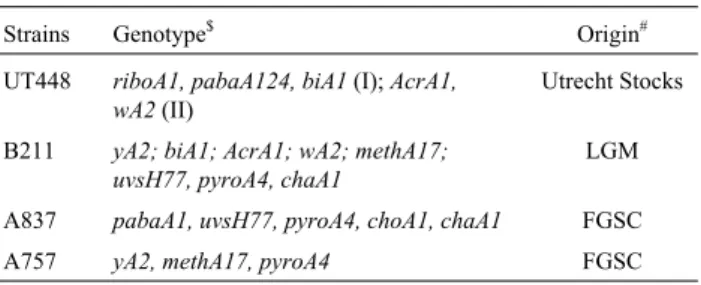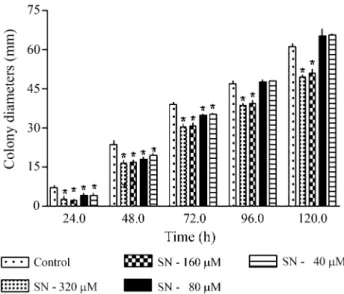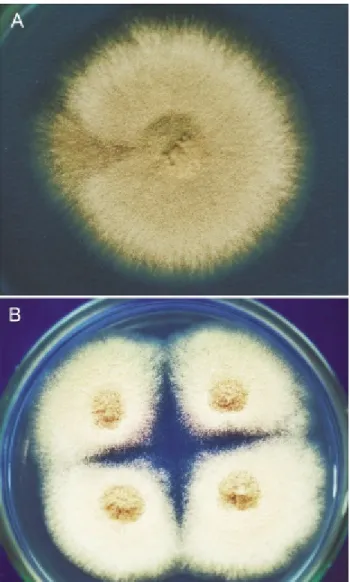Genotoxic evaluation of sodium nitroprusside in Aspergillus nidulans
Texto
Imagem




Documentos relacionados
The antimutagenic effect of the mushrooms Lentinula edodes and Agaricus blazei was studied on conidia of Aspergillus nidulans when exposed to short wave ultraviolet
Effect of pH on the transcription of pacC and aflR genes in wild-type and mutant strains of A. nidulans grown at three different pH
Characterization of an Aspergillus nidulans mutant with abnormal distribution of nuclei in hyphae, metulae, phialides and conidia. A Pcl-like cyclin of Aspergillus
The analyzed, deteriorated variants presented alterations in the cell-foot, metulae and phialides structure, conidiophore number and conidias reduction, and the formation of
Pool II showed significant anti-inflammatory potential decreasing paw volume gain from 61.85% with the albumin control to 14.37% when Pool II was used.. Based on such results,
Increase in mitotic recombination in diploid cells of Aspergillus nidulans in response to ethidium bromide..
Vincristine induces somatic segregation, via mitotic crossing-over, in diploid cells of Aspergillus nidu- lans. Recombinagenic effect of Cryptolepine in uvsH+// uvsH+ and
Because inhibitors of DNA synthesis and inducers of DNA strand breaks have been described as the most potent inducers of homologous recombination in mammalian cells (Arnaudeau